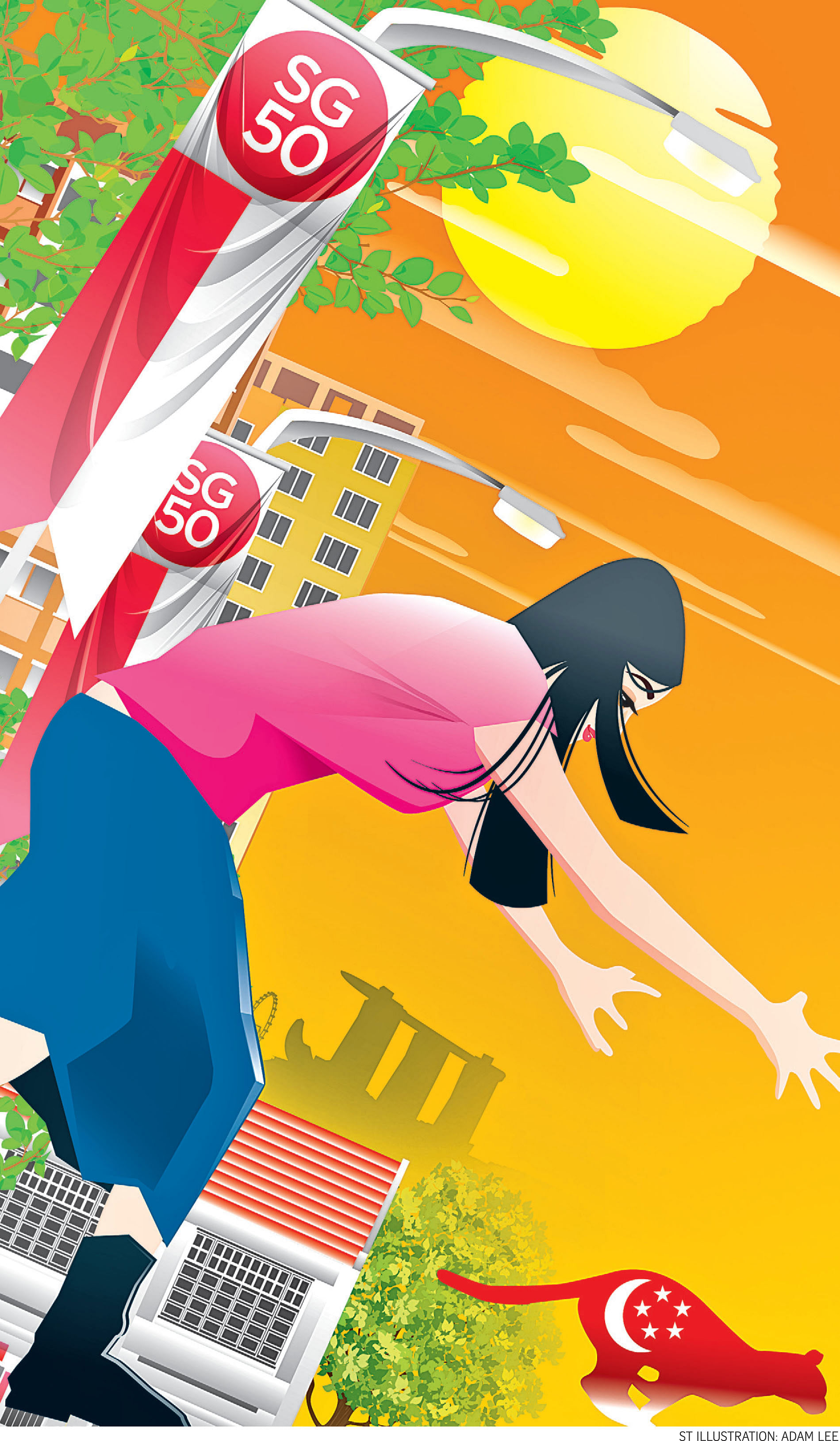The year-long self-hug that is the SG50 celebrations is drawing to a close with Tuesday's opening of the National Gallery art museum, and next month's The Future of Us exhibition.
Looking back, in trying to squeeze Singapore's short history for all the jubilee juice we can get, have we created commodified pieces of our identity that feel comforting but are somehow too comfortable to be true?
Some of us haven't got the foggiest idea what the Singapore identity officially is, despite decades of National Day parades-songs-videos. But this year, surely, we got the message, as it was delivered home fiftyfold. Vignettes of Singapore life - from a moment of anguish to hours of waiting around the Padang, from dragon playgrounds to being a playground for the rich - were flashing before our eyes on all sorts of media and in exhibitions. National Day funpacks given to families were filled with nostalgic games, snacks and figurines.
Outside of the SG50 action, amusing stuff like kopitiam mug-shaped brooches, or tote bags printed with pictures of our beloved durian and ice kachang, or plates with public housing motifs, can be bought.
For those of us who enjoy books, movies and plays by local creators, sometimes moody scenes of HDB flats or retro tiled floors or longkang (Malay for drain) cats are used as shorthand for saying, "This is Singapore". Singlish sometimes seems scrawled across polished prose to dirty it up for alleged authenticity.

When friends and acquaintances from abroad come to visit, the idea of Singapore becomes even more commodified as we reach for the focused vision of a tourism executive. We reach for something to amuse the visitor beyond three days of Marina Bay, malls and museums, and grab onto teh, Tiong Bahru and temples. We reach for ways to describe the Singapore identity, and grab onto being (yes, I am using Singlish here for alleged authenticity) kiasu, kiasi and kakis ("scared to lose", "scared to die", and "friends" respectively, in Hokkien/Singapore slang).
The Singapore identity is made up of these things but, at the same time, it feels like it is more than all of these ideas.
The year of SG50 festivities, while meaningful, feels a bit like a grab for a nation's identity. Try to clutch it and it slips right out of our hands like imported fine beach sand.
Since we are a country which has, hopefully, more years ahead of it than behind it, how about looking more to the future than to the past? History is vulnerable to being written and rewritten by the winners, whereas the future can be shaped by all.
There is an energy that comes from moving away from what is familiar, and considering, for example: Do we want a homogenous culture in the future - holding the shibboleth that people should be excluded from our community because they have the "wrong" accent, that they fail to make their sentences sing with the requisite notes of "lah", "leh", "lor"? Is a Singapore identity that is open to a diverse future that includes non-traditional families, or female or non-Chinese prime ministers too wide a definition of what it means to be Singaporean? Would it be sacrilegious to consider a future when our "lah" and "leh" grow to include foreign notes like "na" and "ne", especially when there is an understandable desire to keep our country for ourselves in a world where horrific things like the recent Paris attacks happen, in a world where there exists a current of more extreme nationalism?
It does seem to be a pity, though, to let go of an identity that we have formed at last, something we have had printed in posters, something we can point to and say, "Wah, sibeh Singaporean, lah". In a world where things keep changing, this gives a sense of solidity and comfort. But commodifying our identity gives the illusion that the question is settled. It never quite is.
There is actually lovely subtlety in some of our local artistic creations that trace the outlines of the Singapore identity, if only more Singaporeans would look away from the bigger, fun foreign movies, music and books long enough to catch a glimpse of it.
They sometimes paint the usual Singaporean tropes, but we do speak Singlish, we do have loads of longkang cats and HDB flats - moodily framed or not - and we do have retro tiled floors. But they also pose the Singapore identity as an ongoing, intriguing question.
They leave the Singapore soul free to slide out of our grasp like a cool longkang cat - drifting just out of our reach, very much its own person, and ever ambiguous.


